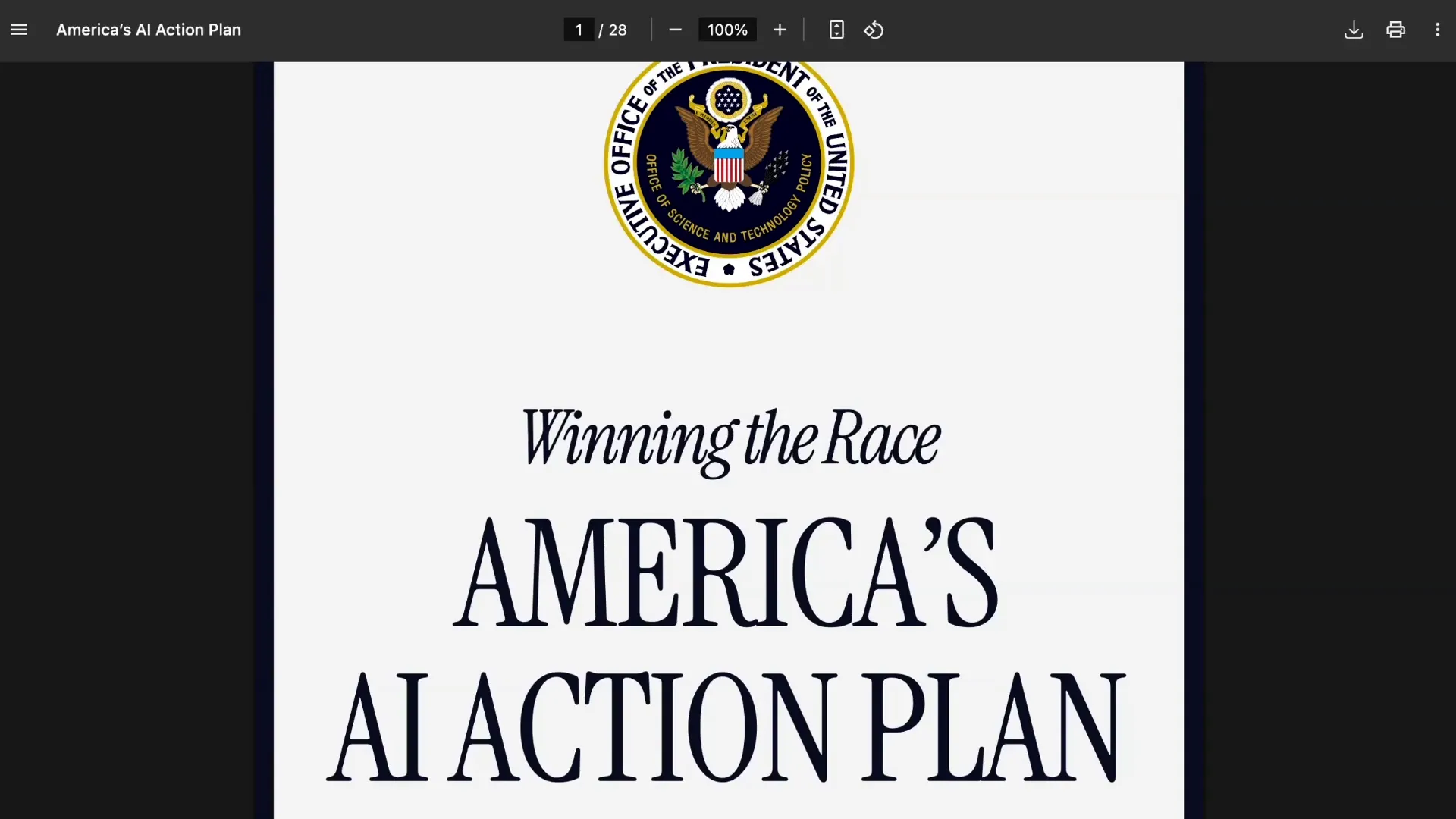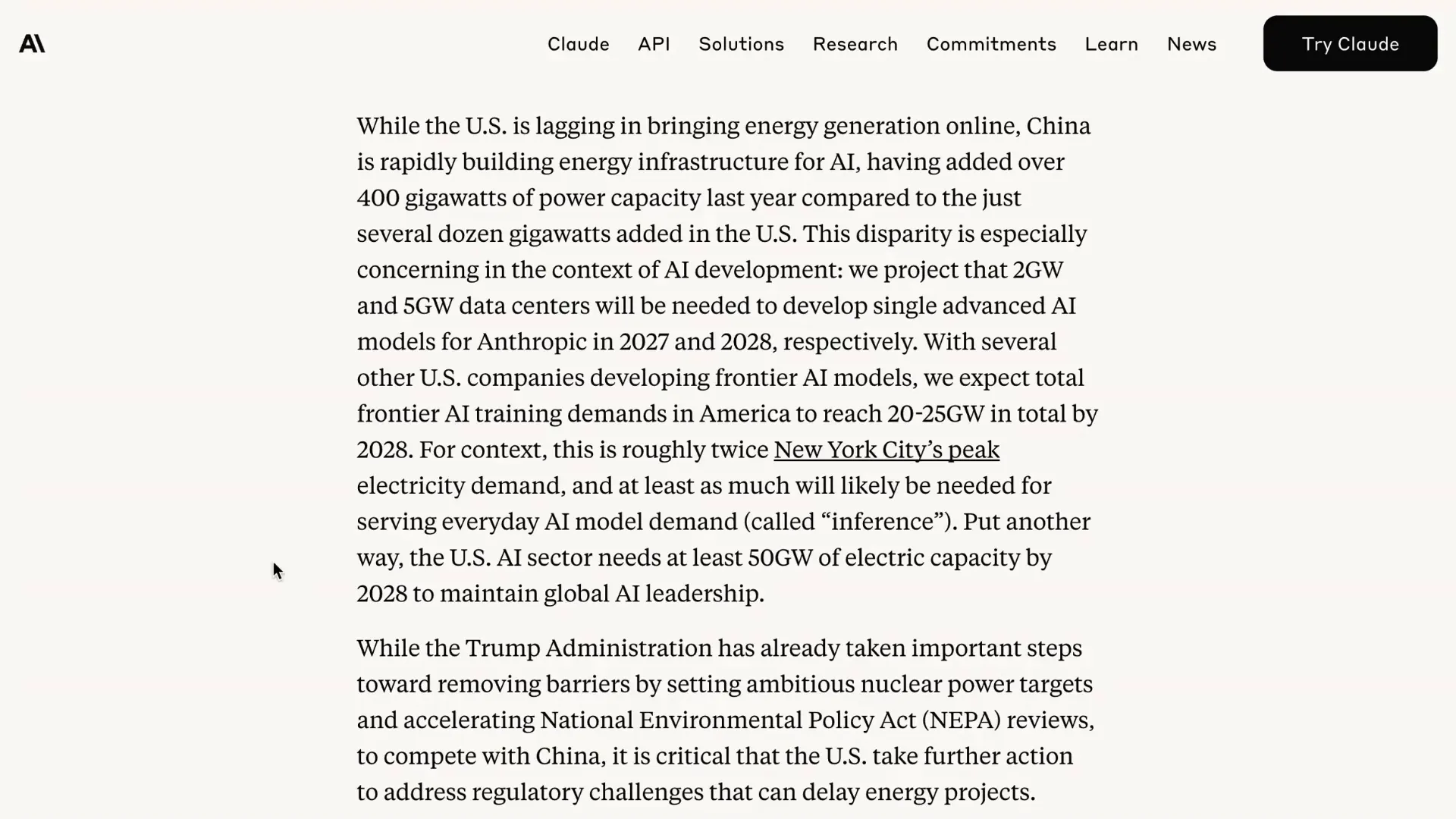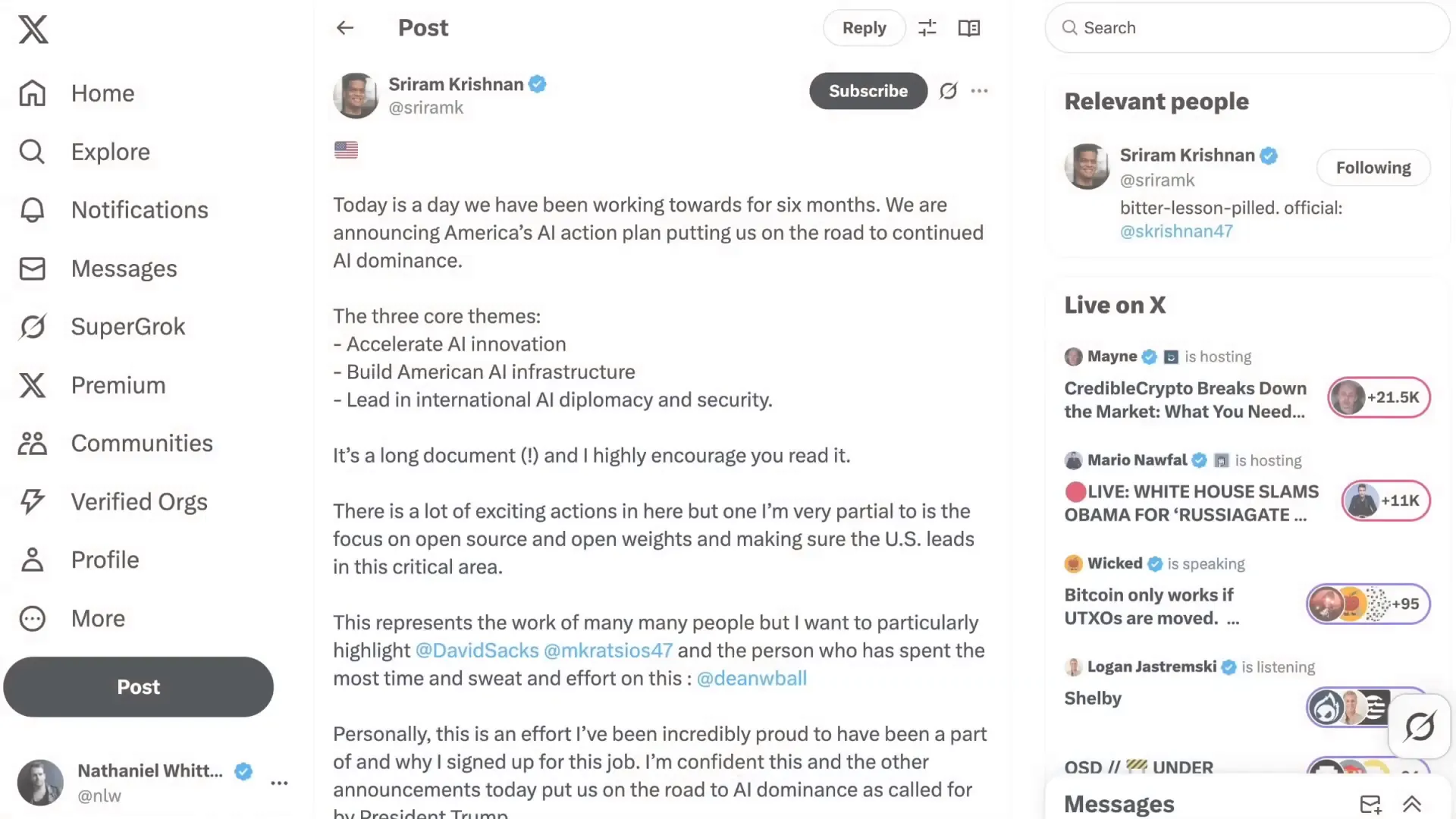America’s AI Action Plan: A Strategic Blueprint for Global Leadership and AI in Recruiting
The AI revolution is accelerating at an unprecedented pace, and America is taking decisive steps to maintain its leadership in this transformative field. The recent release of a comprehensive AI Action Plan by the White House, alongside Anthropic's infrastructure report, signals a clear commitment to not just innovate but strategically position the United States as a global AI powerhouse. This plan has significant implications for many sectors, including the emergent use of AI in recruiting—where the ability to leverage cutting-edge AI tools can redefine talent acquisition and workforce development.
In this article, we will explore the core pillars of America’s AI Action Plan, unpack its geostrategic significance, and discuss how this roadmap could shape the future of AI integration in business practices such as recruiting. By understanding these strategic moves, businesses and policymakers alike can better prepare for the evolving landscape of AI-enabled recruitment technologies.

Open Models: The Foundation of American AI Leadership
One of the most compelling points in America’s AI strategy is the emphasis on fostering open source and open weight AI models. These models, rooted in American values, have the potential to become global standards in various industries, including academic research and business applications like AI in recruiting. The federal government acknowledges the geostrategic value embedded in these open models and advocates for creating a supportive environment for their development and dissemination.
Specifically, the plan recommends policy actions such as ensuring startups and academic researchers have access to large-scale computing power, and fostering partnerships with leading technology companies to enhance access to private sector computing resources. These initiatives are designed to democratize AI innovation, making it more accessible and accelerating progress across sectors.
Interestingly, this approach marks a shift from previous policies that were more restrictive, particularly in relation to China. Earlier, concerns about open source models centered around the fear that China could simply replicate these technologies. However, the reality has evolved. China has surged ahead in open model development, highlighted by DeepSeek's launch earlier this year, which served as a wake-up call for American policymakers.
"If the US doesn't make open models available from a cost and availability standpoint, the world will just default to Chinese models with all the attendant prohibitions that they might have around the way that history is told."
This acknowledgment underlines the importance of open source AI not only as a technological asset but a strategic one. For sectors like recruiting, where AI models can influence hiring fairness, efficiency, and transparency, having American-founded open models could ensure these tools align with democratic values and ethical standards.
Building American AI Infrastructure: Addressing the Energy and Workforce Gap
The second pillar of the AI Action Plan zeroes in on the critical need to build robust American AI infrastructure. AI isn’t just software; it demands vast computing power and energy resources. According to the plan, AI is the first digital service in modern times that challenges America to dramatically increase its energy generation capacity.
Since the 1970s, American energy capacity has stagnated, while China has rapidly expanded its electrical grid—adding over 400 gigawatts recently, compared to America’s mere several dozen. This disparity threatens to undermine U.S. AI ambitions, as energy availability directly impacts the ability to train and run advanced AI models.

To counter this, the plan calls for streamlined permitting processes, strengthening and expanding the electric grid, and developing a skilled workforce capable of building and maintaining this infrastructure. This mirrors recommendations from Anthropic’s report, which warns that AI could require over 50 gigawatts of energy by 2028—double the peak electricity demand of New York City.
Furthermore, the plan advocates for the reshoring of the American semiconductor manufacturing industry, a critical component for sustaining AI hardware development. This revitalization is essential not only for maintaining technological leadership but also for ensuring supply chain security.
For businesses employing AI in recruiting, these infrastructure investments mean more reliable and powerful AI tools will become available domestically, reducing dependence on foreign technology and ensuring smoother integration of AI-driven recruitment platforms.
Leading International AI Diplomacy and Security
The third pillar expands the focus beyond America’s borders, emphasizing the need for the U.S. to lead in international AI diplomacy and security. Success in the global AI race requires more than internal innovation; it demands exporting American AI systems, computing hardware, and standards worldwide.
Currently, America leads in data center construction, computing hardware performance, and AI model development. The plan stresses the importance of leveraging these advantages to forge enduring global alliances while preventing adversaries from free-riding on American innovation.
This pillar addresses a key tension in U.S. foreign policy: balancing America-first withdrawal tendencies with proactive global leadership. In AI, however, the government clearly opts for engagement, aiming to diffuse American AI technologies to allies and partners. This includes denying China access to advanced AI infrastructure while promoting American AI adoption elsewhere.
Experts have praised this balanced approach. Mohammed Soleiman from the Middle East Institute summarizes the core message succinctly: "Build AI infrastructure and build more of it." Meanwhile, Georgetown professor Ryan Fedesuk highlights the document’s grounded realism and understanding of both technology and geopolitical stakes.
"The United States is in a race to achieve global dominance in AI. Whoever has the largest AI ecosystem will set global AI standards and reap broad economic and military benefits."
For organizations integrating AI in recruiting, this global strategy means that American AI tools are likely to become the default standard internationally, ensuring compatibility, security, and adherence to ethical norms across borders.
Implications for AI in Recruiting
While the AI Action Plan primarily addresses high-level policy and infrastructure, its ripple effects will profoundly impact practical applications of AI, including recruiting. AI in recruiting is revolutionizing how companies source, assess, and hire talent—making processes more efficient, data-driven, and unbiased when implemented responsibly.
By fostering open models and expanding infrastructure, the plan ensures that recruiting tools powered by AI are built on transparent, accessible, and reliable foundations. This openness is crucial for mitigating biases and increasing fairness in hiring algorithms, which is a growing concern among HR professionals and regulators alike.
Moreover, the emphasis on American AI export and standards means that companies worldwide adopting AI recruiting tools will likely follow frameworks that prioritize privacy, ethical use, and accountability—cornerstones of American AI development philosophy. This global alignment can ease compliance challenges for multinational firms and enhance trust among job seekers.
Finally, the investment in energy and semiconductor manufacturing infrastructure ensures that AI recruiting platforms will benefit from cutting-edge hardware and faster processing capabilities. This will enable real-time candidate analysis, improved predictive analytics, and seamless integration with other HR technologies.
Conclusion: A Vision for Sustainable AI Leadership
America’s AI Action Plan lays out a comprehensive and strategic framework aimed at securing the country’s leadership in the global AI ecosystem. By supporting open models, investing in critical infrastructure, and leading international AI diplomacy, the U.S. is positioning itself to shape the future of AI responsibly and effectively.
For businesses and sectors like recruiting, these developments promise enhanced AI tools that are not only powerful but also aligned with democratic values and ethical standards. As AI continues to transform how we find and hire talent, understanding and engaging with this evolving policy landscape will be essential.
In the race for AI dominance, the message is clear: build more, build better, and build together. America’s commitment to this vision offers a hopeful outlook for innovation, economic growth, and the responsible use of AI across all domains—including the critical field of recruiting.
